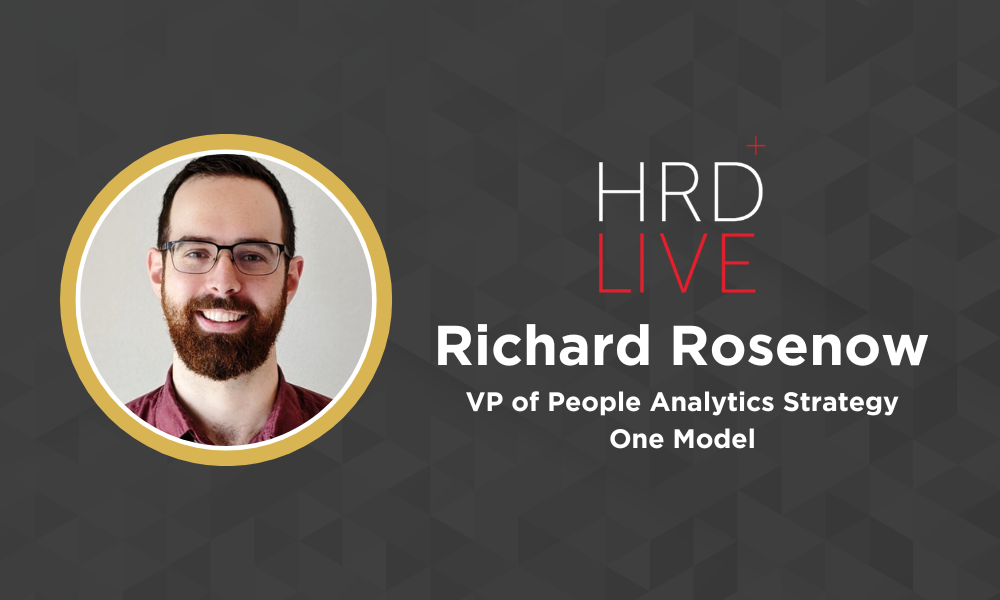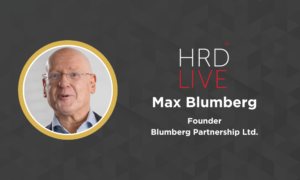Ethics, buy-in and skepticism: Overcoming barriers to people analytics
- 5 Min Read
“The only way we move forward as a business is if people understand: ‘If I’m contributing my data, through workforce systems, chat systems or collaboration tools – if my data is coming into the company – am I going to see value from it as an employee, or is the workforce going to improve?”
- Author: Benjamin Broomfield
- Date published: Mar 22, 2023
- Categories

Podcast: Play in new window | Download
Subscribe: RSS
Barriers to implementing data-driven or data-informed workflows are consistent across business divisions. Just as many marketing directors struggle with leveraging customer data, HR and people analytics teams must also overcome concerns around ethics, financial buy-in, and skepticism. But at its core, it is another vital component of employee listening. Without overcoming these barriers, people analytics functions are doomed to fall at the first hurdle.
Richard Rosenow, VP of People Analytics Strategy at One Model, has scaled people analytics at Nike, Uber, and Facebook, and is no stranger to these challenges. In the latest episode of the HRD Live mini-series on people analytics, he unpacks the confusion around privacy and ethics, establishes clear advice for generating buy-in, and offers a controversial take on how it will shape the future of HR.
People analytics: Employee listening or ethical quandary?
“Data,” argues Rosenow, “is a way to listen at scale.” This simple explanation tying data to employee listening highlights the need for data to tell a story. For example, might attrition data be pointing out a ‘toxic’ manager? Or perhaps the onboarding process has gaps, causing employees to leave right away. But this approach to data still requires humanity.
“Data listening is a way to tap into some of the things that HR is best at. We are thoughtful, we are caring, and we are empathetic about humans and people in the workplace. And that’s still something you can carry with you into the data.”
Indeed, the conversation around the use of employee data does raise questions about ethics and privacy. Expectations change by context, team, country, and region. Without an ethical grounding, HR teams will struggle to implement people analytics at scale. Rosenow emphasizes the need for a clear value exchange.
“The only way we move forward as a business is if people understand: ‘If I’m contributing my data, through workforce systems, chat systems or collaboration tools – if my data is coming into the company – am I going to see value from it as an employee, or is the workforce going to improve?”
The workforce needs to hear clear communication from people analytics teams about how sharing their data will help them enjoy their job, be productive, and ensure they are happy and looked after. This will reassure employees about the safety of their data and feel more comfortable with how it is handled.
Generating buy-in for people analytics schemes
Any major HR initiative will require buy-in from finance, and people analytics is no different. For a transformation such as this that may require technical support, buy-in from operations and IT teams may also be necessary. Rosenow argues the best approach to overcome this barrier is to demonstrate the value of analytics to each team.
“The finance leader and the IT leader are also people leaders. They also have teams that they need to understand, businesses they need to run, and people they care about.”
“Bring the CFO and the CIO into the conversation and say, this is why people analytics is good for the business. This is where this is good for us as an organization. And this is why this is good for you as a leader and as a person.”
This approach helps each stakeholder to understand their workforce in deeper ways. Without investment, and without the right technology, people analytics teams will simply struggle to get off the ground.
How will people analytics shape the future of HR?
The proudest champions of people analytics believe it is the unequivocal future of HR, and a data-driven mentality can reshape HR from the inside. Rosenow disagrees and presents an alternative viewpoint.
“I think that HR in the long term will look more like HR was twenty or thirty years ago. When we start to automate and understand data, these processes will move into the background. The strategic elements of HR will be left. How do we work with, how do we understand, and how do we support humans? It’s not about data. It isn’t about technology. It’s about how we are pulling together these large groups of people to drive a common purpose.”
This is where people analytics can help move HR to the next level and can enable a focus on the qualitative components of the HR function.
Timestamps
00:09 – Introduction
01:01 – Why is it important that we reduce the barriers to people analytics?
01:50 – Why are HR leaders still afraid of people analytics?
03:54 – How can we make it more accessible and encourage HR leaders to think of data insights as another form of employee listening?
05:52 – Where does confusion around privacy and ethics arise, and how can HR leaders reassure their employees?
08:34 – How can HR work with finance or IT to help navigate concerns around the cost or need for analytics?
10:25 – How will overcoming these barriers help HR leaders to scale people analytics at their organizations?
11:57 – How do you feel it will shape the long-term future of HR?








